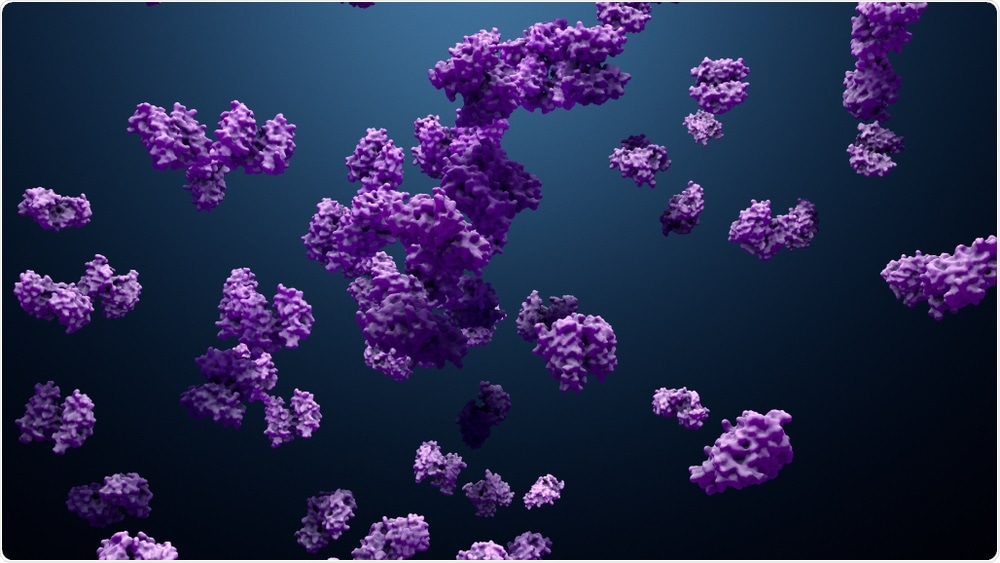A new technique has revealed the natural structure of specifically massive and complex enzymes. Researchers from Martin Luther University Halle-Wittenberg (MLU) and TU Berlin have reported their observations in the Cell Reports journal.

Enzymes. Image Credit: Design_Cells/Shutterstock.com
The team studied a multi-enzyme complex that plays a crucial role in metabolism and found that this complex works differently than previously believed. This would allow scientists to gain a better understanding of certain diseases.
Enzymes are essentially biocatalysts of a cell. They boost the body’s chemical reactions or make sure whether these reactions actually take place or not. Consequently, enzymes have an extremely significant function to play in metabolism. Moreover, individual enzymes often form a complex of several subunits, just like the pyruvate dehydrogenase complex. This complex occurs in all human, plant, and animal cells, and also in fungi and in certain bacteria.
It is vital for energy production in cells. Up until now, the enzyme complex has always been broken down into its individual parts before being examined. Studying the entire, functional complex is very complicated.”
Dr Panagiotis Kastritis, Assistant Professor and Group Leader, Centre for Innovation Competence HALOmem, DFG German Research Foundation
To solve this issue, Kastritis’ team integrated numerous biophysical and biochemical techniques of analysis. Apart from using chemical analysis and mass spectrometry, a unique kind of electron microscopy, called cryo-electron microscopy, has been crucial in analyzing this complex structure, added the structural biologist. Cryo-electron microscopy helps observe the complex, organic structures in their natural form and at high resolution.
However, it is very important to subsequently bring together all this data in computer models.”
Dr Panagiotis Kastritis, Assistant Professor and Group Leader, Centre for Innovation Competence HALOmem, DFG, German Research Foundation
For the present study, the research team is using cell extracts of a fungus that can withstand high temperatures, which makes analysis much simpler. This allowed the team to delve deeper into the various subunits of the enzyme complex and learn how this complex communicate with each other. The researchers also found that this enzyme complex works differently than previously thought.
It was previously thought that all of the subunits were directly involved in the reaction. But now we know that some of them seem to form a kind of chamber that protects the reaction.”
Dr Panagiotis Kastritis, Assistant Professor and Group Leader, Centre for Innovation Competence HALOmem, DFG, German Research Foundation
Since the complexes are highly analogous across organisms, the findings are also allowing scientists to figure out the human pyruvate dehydrogenase complex.
The new approach could allow scientists to better understand several different diseases. For instance, certain viruses decrease the number of enzyme associations in the cells. An effect like this has also been found in Alzheimer’s disease. However, in some cases, enzymes do not work properly and critical reactions occur either too rapidly or too slowly.
“If we are able to better understand the natural structure, we will be able to recognize tiny changes and understand why the reaction is no longer occurring as it should,” concluded Kastritis.
Theoretically, this information may also form the basis for novel therapeutic options.
Source:
Journal reference:
Kyrilis, F. L., et al. (2021) Integrative structure of a 10-megadalton eukaryotic pyruvate dehydrogenase complex from native cell extracts. Cell Reports. doi.org/10.1016/j.celrep.2021.108727.